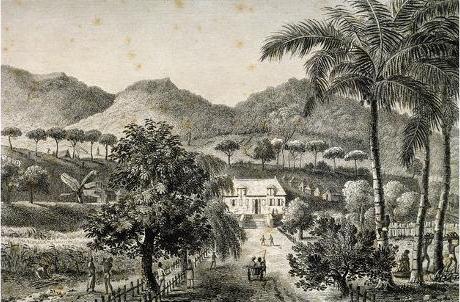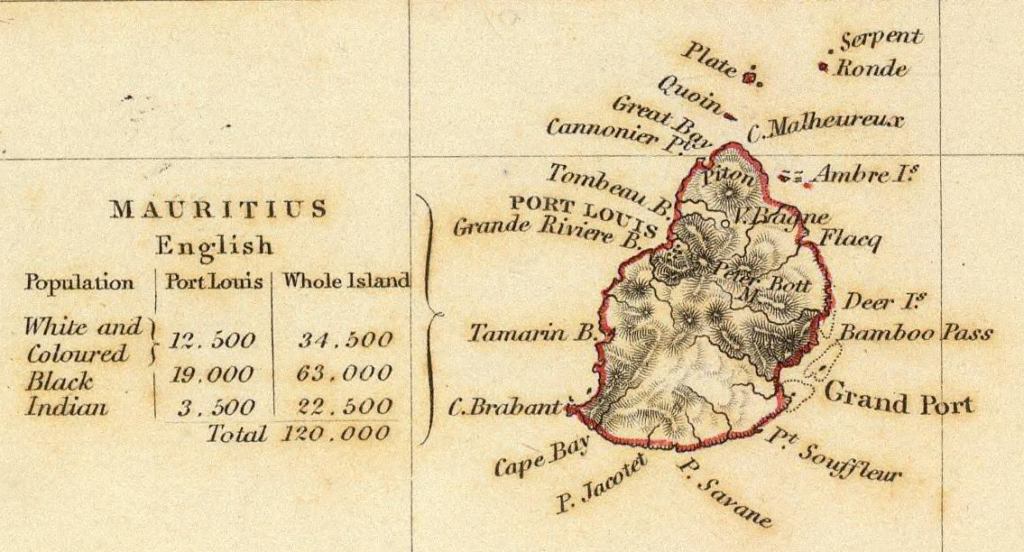By Henry Noltie & Mark Watson (continued from Part I)
The Surgeons (and a Vet)
Perhaps unsurprisingly the second largest number of specimens in the Herbarium came from members of the EIC medical establishment, eleven of whom were responsible, between them, for 334. Unsurprising as at this date medical students, in order to graduate, had to study botany. As Scotland in the late eighteenth and early nineteenth centuries was a renowned centre for medical training it is equally unsurprising that of these eleven surgeons, all but three studied there: six at Edinburgh, and one each at Aberdeen and Glasgow. As already noted, specimens from the Western Himalaya were a spinoff from EIC territorial ambitions within India, and this is reflected in the substantial botanical collections made there by three ‘medics’.
Mauritius
But before that let us go back in time to the Napoleonic conflict in Europe and its wider ramifications. It was Denmark’s siding with France, and the 1807 Bombardment of Copenhagen, that had led to the EIC takeover of the Danish colony of Serampore, Wallich’s transfer to the EIC and, through Roxburgh’s patronage, to his working primarily as a botanist within the Company’s medical establishment. Serampore was not the only Eastern territory that the British took over in the wake of victories in Europe: the same had already happened to the French colonies of Bourbon (later Réunion) in 1809, the Île de France (Mauritius) in 1810, and Dutch Java in 1811. Traces of these momentous events are to be found in the Herbarium, the most substantial of which relates to Mauritius, which Wallich had visited on a sick leave in 1812, when he encountered Charles Telfair (1778–1833) there.
Telfair hailed from Belfast and studied, though did not graduate from, the University of Glasgow (to become a naval surgeon did not require a degree, only a diploma from one of the medical colleges). As well as chemistry and philosophy it seems likely that Telfair also studied botany, either in Glasgow (though in the 1790s botany teaching there was in the doldrums) or, just conceivably, in Edinburgh, as it was to become one of his major interests, both in its ‘pure’ and ‘applied’ (as a sugar planter) forms. As a naval surgeon Telfair had taken part in the surrender of Bourbon where he lived for five years before being invited to Mauritius in 1812 to act as Secretary for the two islands. On Mauritius Telfair played a major role in cultural, ‘improvement’, and scientific activities of the island, from where he was a generous donor of plant material to the Calcutta Garden; the Herbarium contains 91 of his collections. He also sent plant specimens to William Hooker then professor of botany at Telfair’s alma mater, Glasgow.
Two further Scottish surgeons, while contributing only single specimens from Mauritius, have interesting stories or connections. The American-born John Vaughan Thompson (1779–1847) was a military surgeon who studied medicine at Edinburgh and took Daniel Rutherford’s class in 1798. He spent time in Madagascar and Mauritius between 1812 (when he may have met Wallich) and 1816, in which year he published a catalogue of the exotic plants of Mauritius. The specimen he sent for cultivation in the Calcutta Garden was the Mauritian endemic Jossinia lucida in the family Myrtaceae. Better known as a zoologist, Thompson ended up as an inspector of hospitals in New South Wales.
Dugald Carmichael (1772–1827) was born on the island of Lismore at the mouth of Loch Linnhe, and is best known as an algologist. He first studied in Glasgow and then medicine in Edinburgh, though did not graduate. In 1810 he took part in the invasion of Mauritius and in 1813 explored the island of Bourbon. From Mauritius Carmichael sent Wallich a specimen of Adiantum reniforme, a fern with an interesting distribution in Africa and its satellite islands both western (Macaronesia) and eastern (Madagascar and the Mascarenes), but with four sites in China. Clearly fond of islands Carmichael, in 1817, visited Tristan da Cunha, of which he published a natural history. In retirement he farmed at Port Appin, from where he corresponded with William Hooker.

Java, the Straits & Sumatra
Soon after the EIC took over Mauritius, France’s annexation of Holland in 1810 gave the pretext for the British to invade the Dutch colony of Java the following year. This was to have major consequences in terms of SE Asian politics, but in the present context led not only to the addition of important specimens to the Herbarium, but to close friendships between Wallich and two fascinating characters – Thomas Stamford Raffles and Dr William Jack. The Dutch administration in Java, from their capital of Batavia, had been active in the exploration and documentation of the island’s rich biodiversity; it had its own scientific academy and from 1801 employed the American-born surgeon Thomas Horsfield (1773–1859) to study and collect the island’s flora and fauna.
Following the British takeover, Horsfield continued to be employed as a naturalist, initially under Raffles, the island’s Governor from 1811 to 1815. After its return to the Dutch in 1816 Horsfield remained in Java until 1818, during which time he made his single contribution to the Herbarium, a plant with the Javanese name ‘shatomian’, which David Don described as Disporum horsfieldii, though no longer regarded as distinct from the widesrpread D. cantoniense. Horsfield then travelled to Britain where, for the next 40 years, he worked at East India House, for many years curating its Museum and working on his own insect and bird collections. With his botanical collections he was less fortunate. He had entrusted these to Robert Brown who, distracted by his own monographic interests, neglected by far the bulk of Horsfield’s other plants, most of which would end up being first described by Dutch botanists.
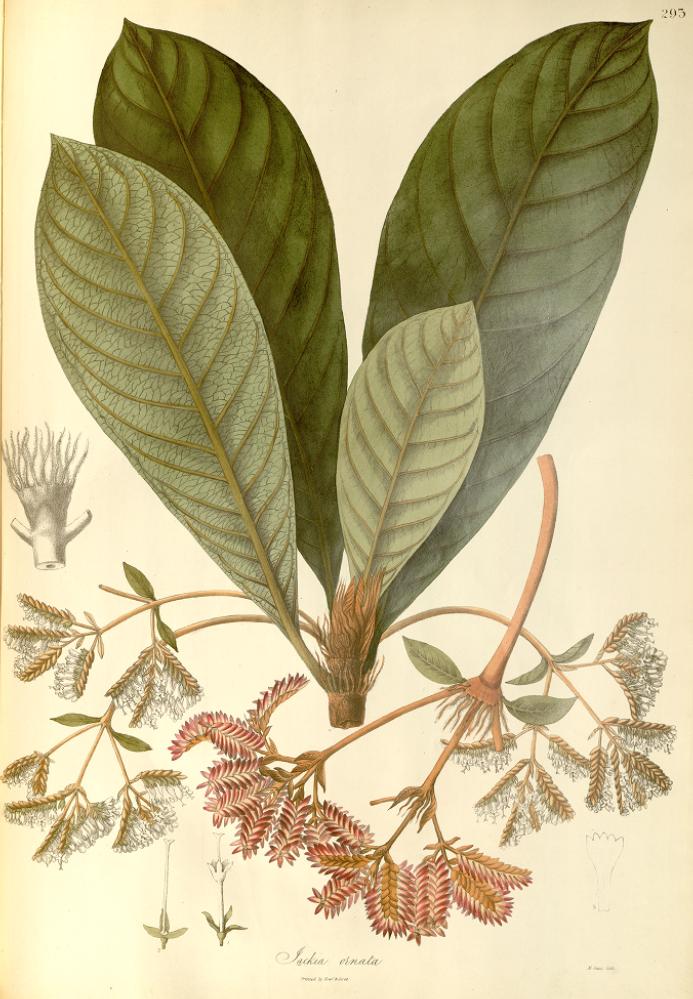
The contribution (64 specimens) of William Jack (1795–1822) to the Herbarium is more significant than Horsfield’s by far. In discussions of botanical history, especially in an Indian context, the role of Edinburgh has rightly been stressed, but it should not be forgotten that the great northern university of Aberdeen was also significant, as demonstrated in four of Wallich’s correspondents: the three Gerard brothers, to be discussed in due course, and Jack. William Jack was son of the Principal of King’s College, Aberdeen (who had himself studied botany under John Hope) and studied, but did not graduate, from Aberdeen before going on to become one of the most brilliant botanists ever to work in SE Asia.
Initially, in 1813, Jack went to Bengal as an assistant surgeon, but caught tuberculois during the Gorkha Wars and recuperated in Calcutta, where he came to the attention of Wallich who recognised his talents and became something of a father figure. Following the return of Java to the Dutch, Raffles, after blotting his copybook in the eyes the EIC, had been sent as Resident to the remote colony of Fort Marlborough at Bencoolen in SW Sumatra. Here Raffles continued both his political ambitions for SE Asia and the passionate pursuit of natural history that he had begun in his earliest postings in Penang and Malacca.
In 1818 Raffles travelled to Calcutta to persuade the Governor-General, Lord Hastings, to establish a British settlement at the southern end of the Straits of Malacca, and it was in Calcutta that Raffles met and befriended Wallich and Jack, and persuaded the latter to return to Sumatra with him as his personal physician and naturalist. In Sumatra Jack made major collections and printed a series of important botanical papers, but at the age of 27, like many others in Bencoolen, he succumbed to fever. Throughout his SE Asian travels – from Penang, Malacca, Singapore and Sumatra – Jack kept in touch with Wallich by correspondence and sent him specimens. These are of particular importance because Jack’s own collections, together with those of Raffles, were all lost when the ship Fame carrying Raffles home to Britain was destroyed by fire in 1824. Only recently recognised as the largest surviving set of Jack specimens, these may prove important as vouchers for many of Jack’s posthumously published plant names.
The Western Himalaya (i)
As an offshoot from the Calcutta Garden, and under the patronage of Wallich’s botanically interested and supportive Governor-General, Lord Hastings, a botanic garden had been established in the upper provinces at Saharunpur in 1817. Its first superintendent was George Govan (1787–1865). Govan was an Edinburgh medical graduate who had studied botany under Rutherford in 1808 (his father, a Cupar physician, had studied under John Hope), and undertook the post with vigour, employing collectors and artists, making journeys of his own into the outer ranges of the Western Himalaya, and establishing a satellite garden in the hills at Nahan in Sirmur.
Govan corresponded with Wallich and contributed a little over 100 specimens to the Herbarium, the majority from the Sirmur hills, with a few from Kumaon. Like most specimens in the Herbarium these are undated and while some probably date from Govan’s period at Saharunpur up to 1821, others may date from the later in the 1820s, when, after a home leave, he returned to India with his wife Mary Maitland. In this second Indian period Govan undertook geological and natural history work from a base at Simla, before retiring to Fife and Kinross in 1832.
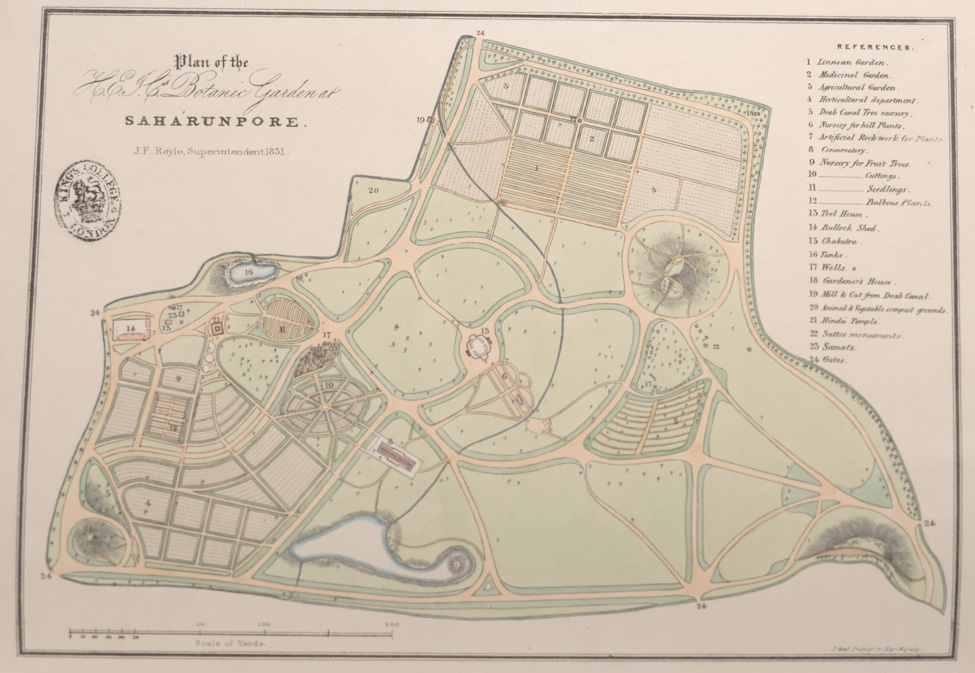
Govan’s successor at Saharunpur was John Forbes Royle (1798–1858) who attended the Royal High School in Edinburgh, but whose medical training was in London (his MD was obtained later in life, from Munich). Royle was also extremely active both as collector himself and as a patron of collectors and artists, with particular interests in Humboldtian biogeography, and in useful and medicinal plants. The Calcutta artists were lent to Royle in Saharunpur while Wallich was in London. Though Royle contributed only 33 specimens to the Herbarium from the Western Himalaya (many from Choor Mountain, one of his favourite localities), he assembled an extensive herbarium of his own, which he took to Britain in 1832 and is now in Liverpool. It was Royle who compiled the first of the indexes for the Wallich Catalogue.
The third of the triumvirate of medical contributors to the Herbarium (31 specimens) from the Western Himalaya was James Gilbert Gerard (1793–1835), like William Jack the son of a distinguished academic Aberdeen family. The Rev Dr Gilbert Gerard, professor of Greek at King’s College, had five surviving sons, three of whom went to India and were active botanically. James, also like Jack, studied at Aberdeen but did not graduate medically and in 1814 went to Bengal as an assistant surgeon. He contributed at least 16 specimens to the Herbarium, mainly from Sirmur, though other contributions might be included under Wallich’s designation of ‘Fratres Gerard’, as the brothers often collaborated in pairs on their surveys.
The other Presidencies – Bombay and Madras
Bombay was always the least active of the Indian Presidencies in terms of botanical exploration and documentation, so it is not surprising that only a single contribution to the Herbarium should be from a member of its medical establishment. Thomas Marshall (d 1821) was born in Northumberland and may have trained in London; in 1804 he went to Bombay as an assistant surgeon and later became Statistical Reporter to the Bombay Government; it was probably on one of his surveys that he collected the labiate Leucas stelligera at Aurangabad.
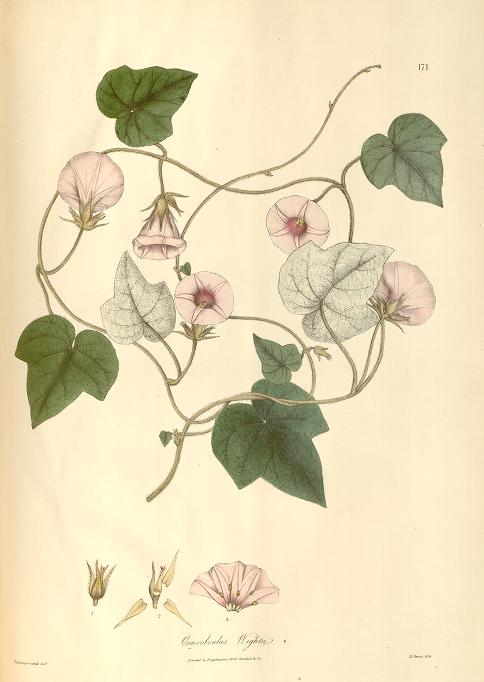
The Madras Presidency, by contrast, had been the cradle for the British exploration of the flora of the Subcontinent from the late seventeenth century and, from the mid eighteenth-century, by the Tranquebar Missionaries. From the 1820s the most active Madras botanist was Robert Wight (1796–1872) who began a correspondence with Wallich in 1826. Wight was responsible for a major ‘indirect’ contribution to the Herbarium – the collection he made as Madras Naturalist 1826–8, which was incorporated by Wallich in 1829 (along with an important Madras collection made by the Tranquebar Missionaries, including William Somervell Mitchell). Only two specimens are credited to Wight personally in the Wallich Catalogue. Both are from the Nilgiris but one of these may come from Wight’s own herbarium. What is now known as Ipomoea wightii was certainly sent by him for cultivation in the Calcutta Garden.
The only other specimen from a Madras medic is from Andrew Berry (1764–1833). Another Edinburgh-trained medic, Berry attended Hope’s lectures in 1781 and 1782, and went to Madras as an assistant surgeon in 1785, where his career was greatly helped by his uncle Dr James Anderson, who put him in charge of the Nopalry garden. The Berry specimen (of what is now called Margaritaria indica) was collected at Courtallum, a rich locality at the southern end of the Western Ghats, where the EIC had a sanatorium and a spice plantation.
And the Vet
As it is not such a great step from those who care for the health of bipeds to that of quadrupeds, the contribution of William Moorcroft (1767–1825) will be discussed here. The first formal academy for the teaching of veterinary science in Europe was founded in Lyon in 1761 and, in 1790, Moorcroft was its first British student. Horses being then the most important means of assisted transport, Moorcroft first practised as an equine doctor in London, before being employed by the EIC at their stud at Pusha, Bengal, in 1808. He was keen to improve the quality of Indian horses by importing what would now be called genetic diversity, and travelled extensively in its pursuit.
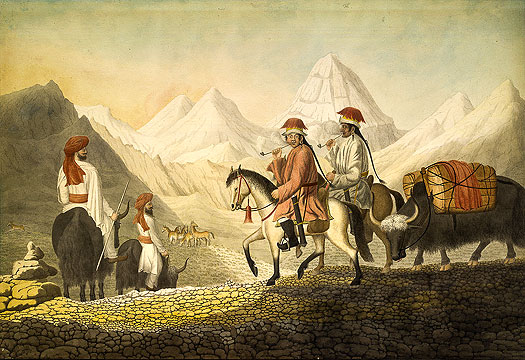
Moorcroft’s first expedition, to Tibet in 1812, was with Captain Hyder Jung Hearsey. In 1819 he embarked on a major expedition to Bukhara in Uzbekistan, then the site of a famous horse fair. The 38 specimens sent by Moorcroft to Wallich are all from this expedition, mainly from Ladakh, with two with two ferns from Srinagar (probably the Garhwal one). Moorcroft reached his goal in 1825 and though he found no horses for sale, his travels represent a major contribution to the exploration of Central Asia. Moorcroft died in Afghanistan on his return journey, for which reason (as with William Jack) his name in the Catalogue had to be recorded as ‘Beatus Gul. Moorcroft’, literally ‘the blessed’, more prosaically ‘the late’.
To be continued…

